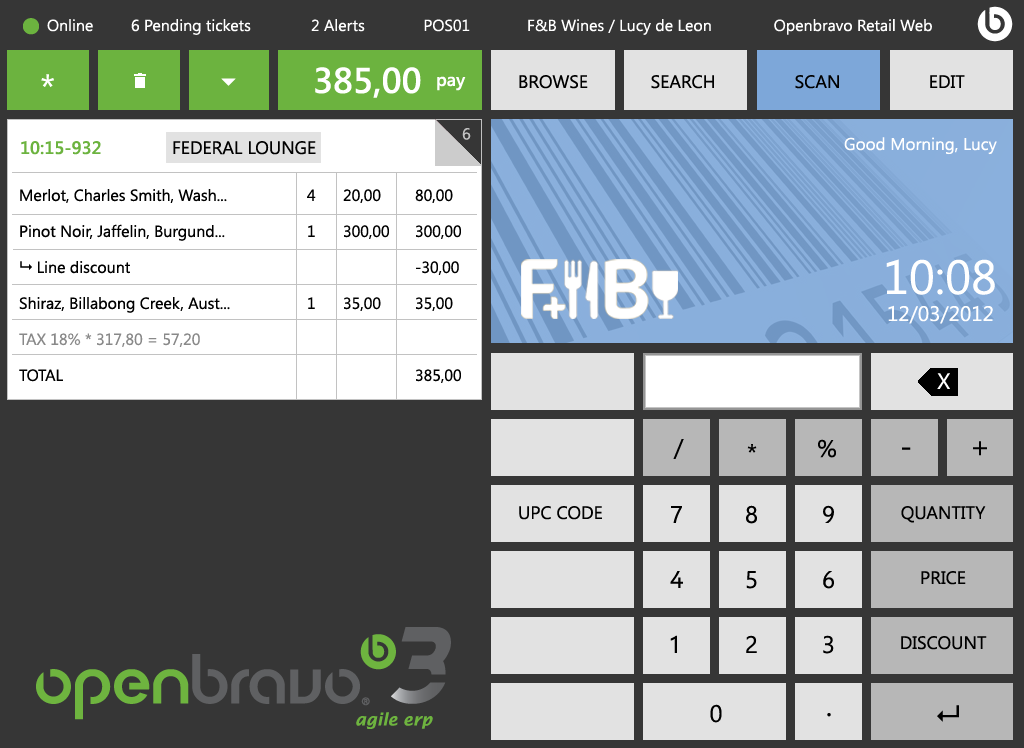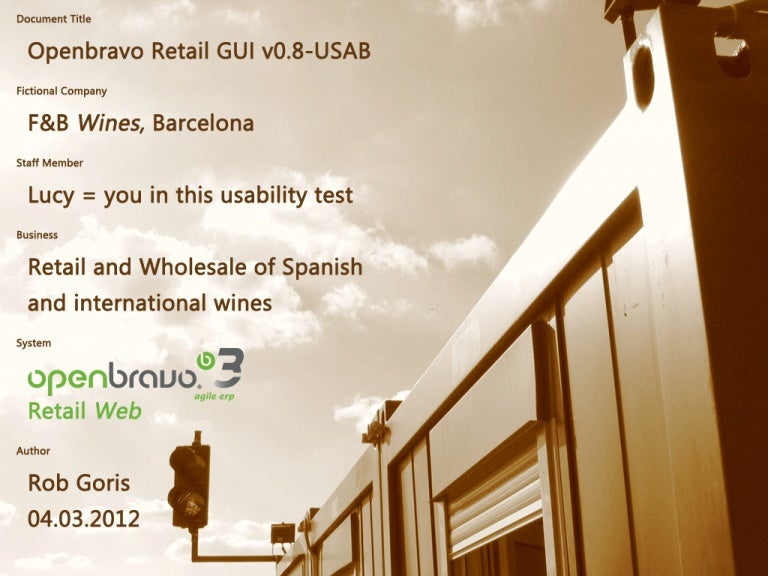
To overwrite in a module any of this templates is enough with overwriting the property to point to the correct template resource. Prints information about added lines to the ticket. Used to print the ticket once it is paid. Here is a list of all the templates that Web POS uses. In this example, the ticket will be changed for a simple one.īefore test it, ant smartbuild should be executed.Īnd this is the final result. ReceiptTemplate = './/receipts/printreceipt.xml' įinally, the template can be customized editing the XML file. With this code, the default template for print receipts is overwritten.
#Openbravo web pos code
Here is the source code of changeDefaultTemplates.js. add (createComponentResource (ComponentResourceType. QUALIFIER ) public class OBEXPOSComponentProvider extends BaseComponentProvider Import import import import import .BaseComponentProvider import. import .Component import .ComponentProvider import .POSUtils /** As you can see in getGlobalComponentResources() method, the js file which we have created in the previous step, will be added to Openbravo web POS resources. It allow us to extend the default properties. OBEXPOSComponentProvider.java: This java class will include our javascript file into the resources of Openbravo web POS.
#Openbravo web pos how to
The development document How to create a new device driver explains the details how to develop a new module that implements this integration.įrom the Web POS side there exist the Payment Gateway connector for Retail Module that implements the integration of Web POS with any payment device connected to the Hardware : New Template to be printedĬhangeDefaultTemplates.js: This js file will be used to overwrite the default template used by Openbravo web POS to print receipts. The Payment Gateway must offer libraries that can be used from Java that is the language used in the Hardware Manager. In this option, the device will be connected to the machine where the Hardware Manager is running and it requires a Hardware Manager device driver that implements the communication with the payment device. Also moves all the security concerns outside the Web POS application because all the communication of the sensitive data will be just between the payment device and the Payment Gateway and Web POS will not be part of this communication. In this case it is only needed to have configured a payment method to be used with the payment device and the cashier will be responsible of performing the payment entering the amount to pay using the payment device when the configured payment method in Web POS is selected.ĭirect communication of the payment device with the Payment Gateway removes the communication management responsibility outside the Web POS application. Web POS and the payment device are not connected and do not share information.

In this document you can find the different payments integration models offered in Web POS you can use for the different payment solutions in the market.

All the sensitive data manipulation should be left to the payment solution integrated with Web POS. Web POS payments integration models are also focused to security, enforcing to follow the international security standards by not storing or managing any sensitive data in the payment transaction. To offer the best purchasing experience to customers, Web POS has different integration models for payment devices and payment gateways that allows stores to use all the electronic payment methods needed. It is optimized to run on mobile devices like tablets or smartphones, and desktop computers with touch screen support. Openbravo Web POS is a light, fast and very user friendly solution. It is used in stores to assist shop floor staff in client-side selling and enables the checkout process. The Openbravo Web POS is the POS component included in the Openbravo Commerce Suite.



 0 kommentar(er)
0 kommentar(er)
